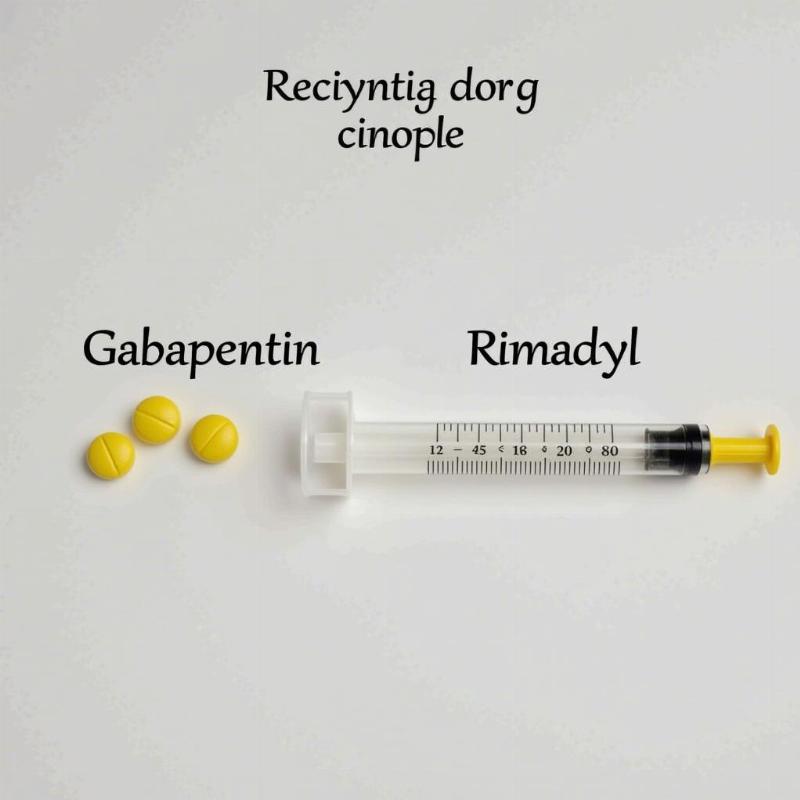Gabapentin and Rimadyl are two medications commonly prescribed for dogs to manage pain and discomfort. While they can be used individually, sometimes veterinarians recommend using gabapentin and Rimadyl together for enhanced pain relief, particularly for conditions like arthritis or post-surgical recovery. Understanding the benefits and risks of combining these medications is crucial for pet owners. This article will explore the combined use of gabapentin and Rimadyl in dogs, providing insights into their mechanism of action, potential side effects, and important considerations for safe and effective pain management.
Understanding Gabapentin for Dogs
Gabapentin is an anticonvulsant medication that is also used to treat nerve pain in dogs. It works by blocking certain nerve signals that contribute to pain sensations. Gabapentin is often prescribed for conditions like arthritis, seizures, and anxiety.
Understanding Rimadyl for Dogs
Rimadyl, also known as carprofen, is a non-steroidal anti-inflammatory drug (NSAID) that reduces pain and inflammation. It works by inhibiting the production of prostaglandins, which are chemicals involved in the inflammatory process. Rimadyl is commonly used for dogs experiencing pain from arthritis, surgery, or injuries.
 Gabapentin and Rimadyl pills for dogs
Gabapentin and Rimadyl pills for dogs
Why Combine Gabapentin and Rimadyl?
In certain situations, veterinarians may prescribe gabapentin and Rimadyl together to achieve better pain control than either medication could provide alone. This is because they work through different mechanisms, targeting different aspects of the pain pathway. For instance, Rimadyl addresses inflammation, while gabapentin targets nerve pain. This combined approach can be particularly effective for chronic pain conditions like arthritis or for managing post-operative pain.
Potential Side Effects of Gabapentin and Rimadyl
While generally considered safe, both gabapentin and Rimadyl can cause side effects in some dogs. Gabapentin side effects may include sedation, incoordination, and increased appetite. Rimadyl, being an NSAID, carries the potential for gastrointestinal upset, including vomiting, diarrhea, and loss of appetite. In rare cases, more serious side effects like liver or kidney problems can occur. Combining the two medications might increase the risk of these side effects, although the incidence remains relatively low.
Important Considerations for Using Gabapentin and Rimadyl Together
Before starting your dog on gabapentin and Rimadyl, it’s crucial to discuss your dog’s medical history with your veterinarian. This includes any pre-existing conditions, current medications, and potential allergies. Your veterinarian will determine the appropriate dosage and monitor your dog for any adverse reactions. Regular blood work may be recommended to assess liver and kidney function, especially for long-term use. Never administer human formulations of these medications to your dog, as they can be toxic.
Monitoring Your Dog on Gabapentin and Rimadyl
Closely monitor your dog for any changes in behavior, appetite, or bowel movements while they are taking these medications. Contact your veterinarian immediately if you notice any signs of side effects. Do not adjust the dosage or discontinue the medication without consulting your veterinarian.
Alternatives to Gabapentin and Rimadyl
Several alternative pain management options exist for dogs, including other NSAIDs, opioid medications, acupuncture, and physical therapy. Discuss these options with your veterinarian to determine the best approach for your dog’s individual needs.
Conclusion
Gabapentin and Rimadyl can be used together under the guidance of a veterinarian to provide effective pain relief for dogs. Understanding the potential benefits and risks associated with these medications is essential for responsible pet ownership. By working closely with your veterinarian and carefully monitoring your dog, you can ensure their comfort and well-being while managing their pain effectively.
FAQ
- Can I give my dog gabapentin and Rimadyl at the same time? You should only give these medications together if specifically prescribed by your veterinarian.
- What are the signs of an allergic reaction to gabapentin or Rimadyl in dogs? Signs of an allergic reaction can include facial swelling, hives, difficulty breathing, and vomiting.
- How long can a dog take gabapentin and Rimadyl together? The duration of treatment depends on the underlying condition and your veterinarian’s assessment.
- Are there any natural alternatives to gabapentin and Rimadyl for dogs? Discuss potential natural alternatives, such as CBD oil or supplements, with your veterinarian before trying them.
- Can I give my dog human gabapentin or Rimadyl? Never give your dog human medications. Always use formulations specifically prescribed for animals.
- What should I do if my dog misses a dose of gabapentin or Rimadyl? Contact your veterinarian for guidance.
- Can gabapentin and Rimadyl be used for all types of pain in dogs? These medications are not suitable for all types of pain. Your veterinarian will determine the appropriate pain management strategy based on your dog’s specific condition.
Beautdogs.us is your premier destination for comprehensive dog care information in the US. We offer expert advice on breeds, health, nutrition, and more. Whether you’re a seasoned dog owner or just starting out, Beautdogs.us provides trustworthy resources to help you provide the best care for your canine companion. Contact us at [email protected] or +1 501-555-7529 for personalized support. Visit Beautdogs.us today!